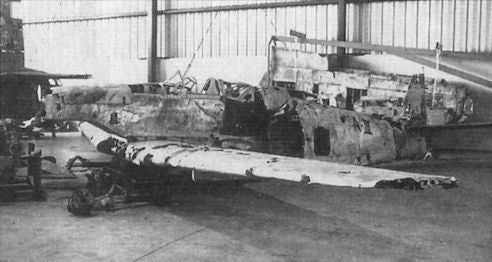
This Fine Art Print by Artist Craig Tinder depicts the Captain Teruhiko Kobayashi of the 244th Sentai in his desparate ramming attack against U.S. B-29 Superfortress bombers. This Limited Edition Canvas Print includes a fragment from a Kawasaki Ki-61-IB Hein engine canister and includes a Certificate of Authenticity.
Details About the RELIC:
This specific Kawasaki Ha40 Engine Canister was retreived in 1989 from Ki-61 "Tony" (No. 704) at Babo Island Airstrip, Irian Jaya, New Guinea. Babo Airstrip was used by the Royal Australian Air Force until they evacuated in January, 1942. Used extensively by both the Imperial Japanese Army Air Force and Imperial Japanese Navy, Babo became a major expansion base in the Pacific theater. By 1943, Babo became an Allied target and was attacked nearly 65 times until all Japanese forces on the island were neutralized. Many Japanese aircraft were strafed on the ground or crashed in the nearby jungle.
This original engine filter may have been strafed or taken fire from the ground as it includes a single bullet hole through the center and the device retains most of it's original black paint with no signs of ensuing fire damage. This item has never been in collector's circulation and is an extremely rare artifact from the South Pacific conflict. Tony '704' was recovered in 1991 and is currently awaing restoration.
 Engine Canister used as relic included in "Final Defense of 357" limited edition prints
Engine Canister used as relic included in "Final Defense of 357" limited edition prints
 Excavated remains of Kawasaki Ki-61-IB Hein "Tony" No. 704
Excavated remains of Kawasaki Ki-61-IB Hein "Tony" No. 704
 "Final Defense of 357" Canvas art with included Ki-61 "Tony" relic
"Final Defense of 357" Canvas art with included Ki-61 "Tony" relic
The Story Behind the Print:
On 27 January 1945, Captain Teruhiko Kobayashi of the 244th Sentai, a renowned Japanese fighter unit, prepared for a daring mission against the relentless B-29 Superfortresses of the U.S. Army Air Forces. The target that day was the 497th Bombardment Group, part of the 73rd Bomb Wing, which had been trying repeatedly to destroy Target 357, a vital aircraft engine factory in Japan. Despite numerous attempts, the group had little success in significantly damaging the facility.
 Captain Teruhiko Kobayashi of the 244th Sentai
Captain Teruhiko Kobayashi of the 244th Sentai
Captain Kobayashi, flying a Ki-61 Hein (code-named "Tony" by the Allies), took to the skies with his wingman in an attempt to intercept the American bombers. During this mission, Kobayashi targeted one of the massive B-29s, "Irish Lassie" (serial number 42-65246). In a dramatic move, Kobayashi made a kamikaze dive and crashed his Ki-61 into the B-29’s wing, causing severe damage to the bomber. The impact knocked Kobayashi unconscious, but he later regained consciousness mid-air and managed to parachute to safety. The event would be celebrated in Japan as a successful kamikaze strike.
 B-29 Superfortress 42-65246 "Irish Lassie" - 27 January 1945
B-29 Superfortress 42-65246 "Irish Lassie" - 27 January 1945
Although the Japanese claimed Kobayashi's attack as a confirmed kill, the story of Irish Lassie didn’t end there. Despite sustaining heavy damage, the bomber remained airborne, and its crew managed to return to base. Upon landing, Irish Lassie broke in two, but the crew survived the harrowing journey, a testament to both the durability of the B-29 and the resilience of her crew.
Learn more about The Ki-61 Hien and Its Italian Legacy in Soaring Through History, Click Here
To purchase or see similar items, visit here.
Commissioned by Museums, Treasured by Collectors





Share:
Wings of Precision, the story behind "F/A-18E Super Hornet - US NAVY Blue Angels"
Phantom Ace, the story behind "Tampa Zero One"